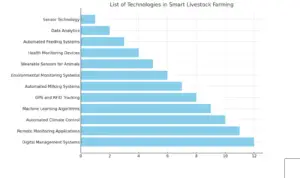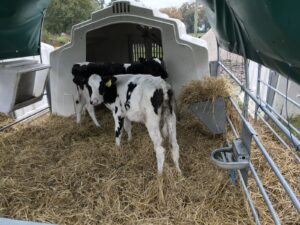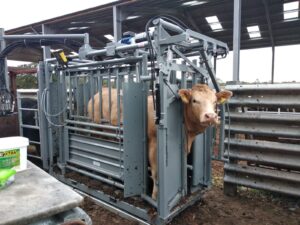What is agriculture? Agriculture is the practice of cultivating land and raising animals for food, fiber, and other products. It has been a cornerstone of human civilization, providing people with sustenance and resources to develop societies.
There are several types of agriculture, ranging from local, organic farming to modern industrialized production systems.

Photo by RenzoVet
Why Do We Need Agriculture?
Agriculture is an essential part of human life. It provides us with the necessary food to sustain our lives and materials like clothing and medicines. Agriculture will always be an integral part of our society, and it is essential to improve human health, fight world hunger, and create a fairer society.
1. Efficient Management of Land
Agricultural lands have different characteristics depending on geographical location, weather, and mineral constituents. It can be best suited for grassland, pasture, or cropland for vegetable production.
60% of agricultural land is not suitable for crops; however, livestock can use this land as pasture. Using these lands for grazing is the best way to maximize land usage, preserve biodiversity, and convert grass into nutrient-rich food.
It is essential to manage lands according to their characteristics and efficiently to preserve natural ecosystems and resources, prevent soil degradation, conserve water, increase biodiversity, and store carbon.
2. The Importance of Agriculture in Fighting World Hunger
Agricultural practices development plays a central role in reducing malnutrition and poverty worldwide. It enables sustainable economic growth, creates jobs, and provides food security. Poor rural areas are often characterized by low agricultural productivity caused by a lack of access to inputs such as technologies, knowledge, resources, improved seeds, inadequate infrastructure, and limited market access.
3. Agriculture Increases Human Health
Nutritious and diverse diets are linked to better health. Plant-based foods like fruits and vegetables are highly nutritious sources of vitamins. Animal products like meat or dairy provide essential proteins. They are necessary nutrients for reducing the risk of chronic diseases like heart disease or diabetes. Agricultural practices have also been linked with better mental health outcomes.
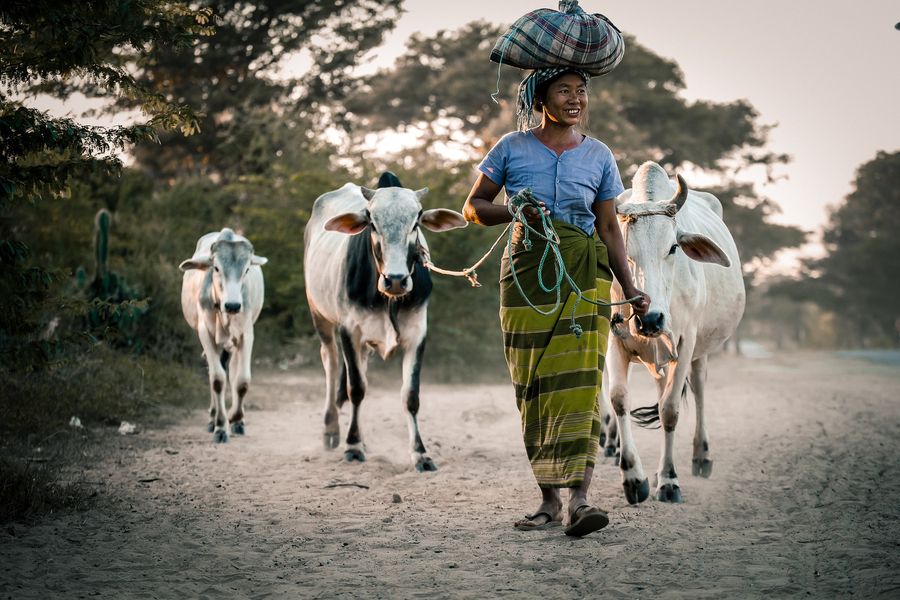
Photo by sippakorn-yamkasikorn
The Drawbacks of Agriculture
1. Environmental Impact Of Agriculture
Agriculture methods, especially intensive farming systems, have impacted natural resources and the environment. From deforestation to water pollution, with the rise in world population and consequent highest demand for food in the last century, these environmental effects have grown exponentially. The practices of modern agricultural systems are significant contributors to climate change, resource depletion, and biodiversity loss.
Intensive agricultural practices have significant carbon emissions, can reduce soil fertility over time, and damage ecosystems.
Animals raised in intensive systems can produce waste, contaminating water and increasing methane gas and other pollutants in the air. The use of pesticides, herbicides, and fertilizers required for large-scale farming contributes to local waterways and soil pollution. Deforestation to meet the demand for farmland damages ecosystems and releases significant carbon dioxide into the atmosphere, accelerating global warming.
2. The Dependency on Fossil Fuel
Agriculture is dependent on fossil fuels in many ways: energy to power tractors and other farm machinery, fuel for transporting goods, and the production of synthetic fertilizers.
However, agricultural producers are shifting from traditional fossil fuel-based energy production to renewable sources such as solar, wind, and hydropower or using digesters to produce methane for electricity or heat.
Types of Agricultural Systems
Although within the same sets of principles, types of farming systems may differ and be implemented in different ways. Lands management and animal rearing systems vary depending on local climate, social systems and population needs, natural resources, economic situation, and agricultural policies.
1. Commercial Agriculture
This farming type focuses on producing crops for sale on markets. It often involves using a large portion of the farm and advanced technology and machinery in a semi-intensive way.
2. Industrial Agriculture
Large amounts of capital and technologies are used to maximize production and efficiency in this intensive, industrialized agricultural setting.
Industrialized agriculture is a system of farming that prioritizes efficiency and output over land quality preservation. It heavily relies on the use of synthetic fertilizers and pesticides. It often involves monoculture, or just a few cultures, to maximize crop production.
3. Agroforestry
This type of farming involves integrating trees with crops and/or livestock in a single management unit.
4. Organic Farming
Organic farming is a type of agricultural system that aims to grow vegetables and rear livestock with minimal intervention with chemicals like fertilizers, pesticides, and genetic engineering. Organic farmers embrace techniques to conserve water and energy resources and create more efficient monitoring systems for pest control so that only necessary interventions are used when needed.
5. Permaculture
Permaculture emphasizes the use of natural systems and relationships to create self-sustaining and resilient ecosystems. It is based on the principles of ecology and incorporates elements of organic farming, agroforestry, and sustainable living. It relies on observing and interacting with nature to understand patterns and relationships, producing no waste and using small and slow solutions.
6. Aquaculture
This type of farming involves the cultivation of aquatic plants and animals, such as fish, shellfish, and seaweed, in both marine and freshwater environments. Marine aquaculture is farming saltwater species, such as salmon, tuna, shrimp, and oysters, typically done in the open ocean or coastal waters but can also be done in tanks or enclosures. Freshwater aquaculture is farming freshwater species, such as tilapia, catfish, and carp. It is typically done in enclosed systems.
Aquaculture is considered a way to supplement wild fish, which have been depleted by overfishing and pollution. Its potential downsides are genetic and environmental impacts, and the use of antibiotics and pesticides can also be controversial.
7. Subsistence Agriculture
This type of farming is practiced primarily to meet the basic needs of the farmer and their family. It is typically found in developing countries and involves small plots of land and simple tools.
8. Regenerative Agriculture
Regenerative agriculture is an approach to farming that focuses on rebuilding and regenerating the health of soil and ecosystems. It aims to positively impact the environment and local communities while also producing food and other products.
Regenerative agriculture aims, according to the climate and the characteristics of the local environment and communities, to create a system able not only to minimize the impact of farming but actually to create natural cycles that regenerate soil resources for healthy crops, livestock, and water system.
This system uses regenerative practices to restore and maintain ecosystems’ health and productivity while providing economic, social, and environmental benefits.
Livestock Farming Systems
There have been different attempts to classify Livestock production systems. However, this has always been challenging because farm animal rearing systems can differ substantially depending on geographic areas, level of industrialization, population density, type of economy, and level of development. The most commonly farmed animals in the world are Cattle, pigs, and poultry, and to simplify the different types of rearing systems, we can identify some parameters that can be used to classify the type of livestock farming:
- Land usage (grazing or not grazing)
- Irrigation or rain-based feeding systems
- Intensive or extensive production management

Photo by RenzoVet
Grazing Livestock Systems
Grazing livestock systems refer to managing animals, such as cattle, sheep, and goats, by allowing them to graze on natural pastures rather than being confined to feedlots or house systems. This type of farming is often used in rangeland or grassland areas and relies on the rotation of the animals between different pastures to ensure they have access to fresh forage. The goal of grazing systems is to balance the needs of the animals with the needs of the land.
1. Rain-fed Livestock Systems: Regions with natural rainfall for the growth of forage are the best suited for this type of farming. In these systems, farmers must carefully manage the grazing of their herds to ensure that the animals have access to adequate forage during the rainy seasons and to prevent overgrazing during the dry seasons. Techniques such as rotational grazing, where animals are moved to different pastures at different times of the year, or growing drought-resistant forages are often used in this farming system. Rain-fed livestock systems generally require more management and planning than systems that rely on irrigation.
2. Irrigated Fed Systems: Irrigated livestock systems refer to animal production typical of regions where irrigation is used to provide a consistent water supply for the growth of forage. Irrigation allows farmers to grow highly proteic and energetic crops like alfalfa, clover, and corn. This type of farming is typically found in areas with low natural or seasonal rainfall patterns.
Irrigated livestock systems typically require a significant investment in infrastructure, including irrigation systems and equipment, as well as ongoing costs for energy and water.
3. Extensive Livestock Systems: This type of system is typical in regions with large areas of natural pasture and low population density. These systems typically rely on minimal feed and water inputs, such as feed and water, and minimal management requirements. The herd’s size is generally significant but with low stocking density, allowing the land to recover between grazing cycles.
Extensive livestock systems are often used in areas with harsh climates or poor soils, where other forms of agriculture may not be feasible.
Intensive Livestock Farming Systems – Landless
High inputs of feed, water, and other resources, as well as high management and labor requirements. The goal of intensive systems is to maximize productivity and system efficiency, often by using genetic selection and other techniques to improve the growth rate and milk or meat production of the animals. Animals are typically housed in barns or feedlots and are fed a combination of forage and concentrate feed.
These systems tend to be highly profit-driven but require significant infrastructure investment and ongoing high feed, water, and management costs. They tend to be addressed as at higher risk of animal welfare concerns and environmental impacts, such as pollution from manure, overuse of antibiotics, and emissions of greenhouse gases.
How Does Livestock Contribute to Greenhouse Gas Emissions?
We have already mentioned that agriculture contributes to carbon emissions in the atmosphere. According to EPA, the US greenhouse gas emission from agriculture is around 14%.
However, it is essential to note that regenerative and sustainable agriculture practices can create ecosystems able to remove CO2 from the atmosphere by sequestering carbon in dead organic matter and soils.
The Carbon Cycle of Methane Produced by Cows
The direct contribution from animals (in particular ruminants like cattle) is about 3.9%, according to EPA 2018. However, there is a need to create more clarity and share the correct information regarding GHG production from farmed animals.
Methane is produced in the digestive system of cows as a byproduct of digestion and excreted through belching. Methane reaching the atmosphere can act as a potent greenhouse gas, trapping heat and contributing to global warming, and this is the case with methane produced by other industries. However, methane produced by ruminants is split into carbon dioxide and water in the atmosphere and used for plants’ life cycle. Plants absorb carbon present in the methane through a process called photosynthesis and use it for growth. This process continues cyclically, as the carbon is continuously exchanged between the atmosphere, the soil, and living organisms.

Image by RenzoVet
Cows Grazing Can Also Help Restore Carbon Into the Soil in Other Ways
- Grazing animals trample dead plants into the soil, increasing the amount of organic matter incorporated into the ground.
- Their hooves break up the soil surface, which allows water infiltration.
- Manure from grazing animals adds nutrients to the ground and organic matter to the soil supporting the growth of soil microbes, improving the ecosystem, and helping break down plant material.
- Grazing can also stimulate the growth of desirable plant species that help increase the soil’s carbon content.
- In managed grazing systems, rotating herds to different pastures can help reduce overgrazing and promote the growth of diverse plants, which can help sequester more carbon in the soil.
Overall, well-managed grazing systems can play a role in restoring carbon to the soil, which can help mitigate the GHG emitted into the atmosphere in a process called “the sink effect.”
New Agricultural Systems and Technologies
Hydroponics Agriculture
Hydroponics agriculture allows crops to be grown without soil and utilizes mineral-rich solutions to provide necessary nutrients for plant growth. This process enables plants to grow faster and produce a higher yield. The growing conditions are tailored to the specific needs of crops allowing cultures to be less susceptible to pests or diseases.
This system helps farmers to control the environment instead of relying on weather fluctuations; it saves space and time and requires fewer resources than traditional farming methods.

Photo by iamareri
Vertical Farming
Vertical farming provides an alternative to traditional outdoor farming. It is a practice that involves growing crops in vertically stacked layers, often utilizing controlled-environment agriculture technology. This agriculture offers some advantages, including resource optimization, improved food safety, increased yields, reduced water and pesticide usage, and greater access to fresh produce in urban areas.
A unique aspect of vertical farms is their ability to create a controlled environment for each crop; this includes temperature control, humidity levels, and light exposure.
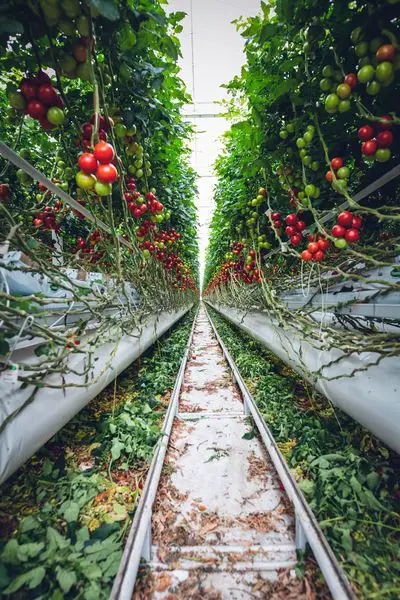
Photo by markus-spiske
Precision Farming
Precision farming is an emerging trend that uses innovative technology to maximize productivity and efficiency. This form of agricultural management utilizes global positioning systems (GPS), sensors, and other high-tech equipment to collect data about soil conditions and decide how best to optimize crop yields. By analyzing the data collected from these precision farming systems, farmers can identify problems quickly and prevent issues.
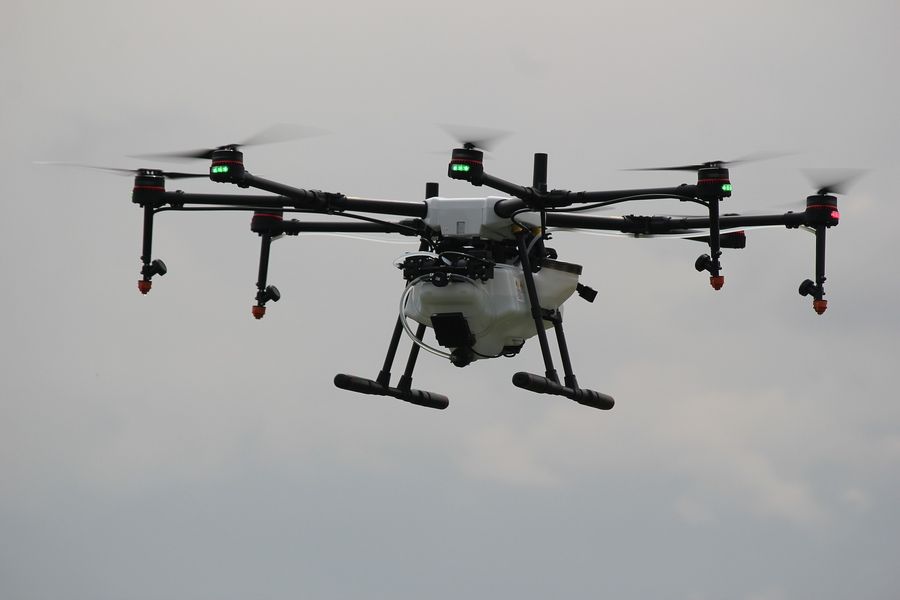
Photo By Herney-Gomez
How Does Agriculture Affect the Economy?
Agriculture plays an integral role in the economy, both domestically and globally. In today’s world, a robust agricultural industry is essential to economic success. Not only does it provide a reliable food source for the population, it also provides employment opportunities and helps generate income.
- Job creation: Agriculture provides employment opportunities, both on farms and in related industries such as food processing, transportation, and marketing.
- Food security: A solid agricultural sector helps ensure a stable food supply, which is critical for economic stability and growth.
- Export revenue: Agricultural exports generate significant revenue for many countries, particularly in developing countries where agriculture is a primary source of income and sustenance.
- Rural development: Agriculture drives economic growth in rural areas, essential for reducing poverty and improving living standards.
- Input industries: Agriculture supports a range of other industries, including seed, machinery, and other technology manufacturers, providing additional economic benefits.
- Price stability: A stable and efficient agricultural sector helps to maintain stable food prices, reducing the impact of inflation.
What Is Agriculture? Conclusions!
Agriculture is the foundation for food and essential materials such as clothing and medicine.
As the world’s population grows, agriculture becomes even more critical in the fight against world hunger and improving human health.
Efficient land management is at the heart of maximizing agricultural efficiency. Considering that 60% of such land can not be used for growing crops, it is essential to find the proper management mixing livestock grazing, arable, rewilding, and wetlands.
As the call for a sustainable future becomes more important, the adverse effects of modern agriculture on climate change, biodiversity loss, and resource depletion need addressing.
It’s encouraging to see the many agricultural systems in place, from regenerative farming to emerging farming techniques, precision farming, and sustainable livestock farming systems; the world of agriculture has the potential to be the solution.
We hope this comprehensive view of agriculture provides insight, sparks discussions, and pushes for action toward a sustainable future. If you found this article helpful, we encourage you to comment with your thoughts and share them with others to foster broader awareness and dialogue.

